Since 1993 Copyright Notice
The HP Way, and some good memories.
Description
This part is about the Hewlett Packard Company. One of the most interesting companies in it's best days. I think today, they employ people like any other multinational company. I am a great admirer of old Tektronix instruments, and I own quite a few. It is probably the company closest to HP, though Tektronix was more classical.
|
|
|
HP LabsWhen I visited HP Labs in California for the first time, I felt like Alice in Wonderland. I saw miracles where ever I went. In the company in Holland, where I worked before, called "van Berkel's Patent", I shared a spacious 40m² office with my manager. It had a glass front and great view on the landscape. A woman was bringing us coffee in the morning, and tea in the afternoon, and the daily mail. (Instead of email, we had the mail envelopes, which were carried around. It was really a nice place to work, and graduated engineers were privileged. Right after my first project, I was given great freedom. My manager knew what I was working on, but my daily work was not controlled. That was new to me. The financial guys lived one floor higher. These were older, influential persons. They were a lot more privileged, and you could just see that from the way the behaved. They had too much freedom, if you ask me now. They were brought each morning a selection of Financial magazines and newspapers. So I guess that's how they started their working day. My investment banker at the time did not know I worked there, and I asked him on the phone, if it would be a good idea to buy "van Berkel's Patent" stock. He said: No, don't do that! The management speculates privately with the company stock. However, at HP USA, working atmosphere was different. Everyone worked in a cubicle, with dimensions of really only 2x3 Meter. No matter who you are or what you do. The walls were 170cm high, meaning when you sit at your desk, you can not look outside, you can only see the walls of your cubicle, and the screen of your HP150 monochromatic Computer, which can only do email in green letters. That email system worked only company internal, but you need to look at this from a perspective, where paper communication was the standard in all companies. You are alone in your cubicle. When people pass by, they can look inside and see what you are doing. You might think this was horrible, but I saw only happy employees. The floor had main streets, and side streets, and everywhere were those cubicles, like little apartments. Strangely there were no numbers or names on it. You simply had to know where somebodies cubicle was, or you would never find him or her. They people seemed to like it. To find somebody, is almost impossible because there was no official map. My way to find somebody was, just walk over to one of the many meeting places. These were a cubicle with a round table in it, but you could find those easily, because of the large flip chart, standing upright. In those meeting places was always a phone, I would dial the person's number, and ask him to stand up. That was always fun to do, because this was considered very bad manners, but it was accepted from visitors with a smile and a joke. So yes, they were 'captured' in their cubicle, but they were given great freedom of how to use their time and resources. What counts is only results.
What was also new for me, that managers could be young or old, as if that did not matter. You could see there, how people can be given great freedom and little control, and will work hard, as long as the right factors are in place. What these factors are, is difficult to say for me, but the factors were there for sure. |
|
|
|
About Changes, errorz and Misstakes. |
Not interested?In the 1950's, Bill Hewlett and Dave Packard planned to start their European operation, and not sell any more through a distributer. So what to do? Just take the map of Europe, and throw a dart at center. It lands in South Germany. So that was decided. There is a story around, which is unofficial and not confirmed. Initially, they went to the major of Munich, who praised the Bavarian way of drinking beer, and eating Bavarian sausages. It had the reverse effect. Bill and Dave did not like the idea of beer a drinking employees. Munich was off the radar. When they were told, in the South West, people are different, they tried it over there. What was good, they had already a distributer there in the South-West, called Wandel & Golterman. Now they could have just quit the relations with them, and say we are going to do the sales ourself. But Bill and Dave had a better idea, for a win-win situation. In 1959 they went to the small village of Eningen to propose a daring plan. Let's join our companies. But Wandel & Golterman refused the offer. So Bill and Dave looked on the map once more, to see what is a place near by. Close to the airport, close to the main roads, and outside city centers, where a large parcel of land is available. The search ended at the desk of the major of Sindelfingen. This is the home town of Mercedes Benz, and they asked to buy a a piece of development land. Not small, but huge. It was to build the European operations in Sindelfingen, the first Plant outside of California even. But the major explained, what we have, we always give it to Mercedes Benz. Back in the hotel, they looked on the map again, and at the other side of the road was a small village, called Boeblingen. They tried their luck just, and yes they could buy a large parcel, to build 6 plants, including a huge R&D facility, and the European logistics center at another piece of land. Too bad for Wandel & Golterman and for the city of Sindelfingen. In business, sometimes you win, sometimes you loose. |
No Risc no funThis is an old, funny sentence, HP Used to sell their Computers, using 'Reduced Instruction Set Computer' Chips. Abbreviated: RISC. It was at the same times as INTEL put "Intel Inside" stickers on PCs. We were handed out those "No Risc no fun" stickers, to put on your items, but soon this was understood wrong, and we could not get those stickers any more. Indeed there is such a thing as an intelligent risk, in financial mathematics, and in trade as well. This is like taking an 50% chance to loose your money, but when you win you multiply your investment by a factor of 10. It's opponent is "a stupid risk", which is what this text part is about. Somewhere around 1993, HP began to change from an engineering driven company, into a marketing driven company, and a downwards spiral began. In the beginning there was no visible agenda for it. It sort of just happened. It seemed to me, when Bill Hewlett and Dave Packard have died, with them died the unforgettable spirit, these two men had given the company. Soon after, the first marketing psychopaths smelled their chances. It's just this kind of doing things, just because you can. This behavior is very common amongst human. Just take a good look at what a group of young kids are doing. One kid will kick another, obviously for no reason. But there is a reason! This puts him higher in rank, when he gets away with it. Kids have an instinct feeling for this. Frankly, you can observe the same in the zoo. There is the largest monkey who owns the favorite place on the main rock, with the best view from above. Just he has to leave that position occasionally to do unavoidable things, he can't do up there. Then, you see the second largest monkey jump on the rock instantaneously. He was just waiting for it. The old one doesn't like it, but he can't avoid it for 100% of the time. For a short moment, the second important monkey demonstrates his rank, just by taking this place for a short moment. There is no purpose other than showing he can do this. When the boss comes back, he quickly makes place. But of course all the females saw it, and that is very beneficial for him. You don't need to search very long to see this fully identical behavior within a company too. Actually it was just like above, what I saw at HP as the old owners died. Of course just indirectly, I never had a chance to look at their empty chairs. Small groups of people teamed up with totally new ideas, that the old founders sure would have rejected, but they were dead anyway. Silently and uncommunicated, the 10 rules of the 'HP WAY' were forgotten. I remember many people objected. This was historical company DNA. From now on, the company was ruled with respect to the direction from where the wind was blowing, and where the power was coming from. Management had all kind of ideas, and if they could do it, they just did so. They even created slogan for it. Called: Manage change, to break away from the rest. What a sick verb that was. So the change is a target by itself, making you better than the rest, just because. We were given T-shirts with this text on it, and caps to wear. Break away from the rest.... I never liked it. This 'rest' was not an external company, it was other parts of the company itself. Instead of teaming up, they set up divisions against each other. Your team is successfully breaking 'away from the rest', but the 'rest' could be as well be your own department, your business unit, or just yourself. Everybody, every team, had to break away from 'the rest', and show how great they did that. Even worse, they did the same with strategies. Just find a strategy that breaks away from the rest, and you are the king. Nice for you, but not so nice for 'the rest'. I was in state of war with this program ever since. Effectively, this disposed of the original direction of the company, and it was the beginning of a long chain of changes, which to my opinion has the potential to end the company, one day. Well, but let's not hope so, my wife still works there. A new benchmark was introduced: CPOD, Cost Per Order Dollar. My prognosis was, and still is, this will damage the company DNA. Any division with a higher than average CPOD was told they should feel bad, and they must improve themselves. Even though they were already profitable since 40 years, they were now doing things wrong. CPOD ranged from 33% for the extreme technical products, to an amazing 4% for the Printer Division, who were extremely proud of this, though it was neither their own achievement, nor a top down goal. It just happened, and this 4% stunned us all. It didn't take long and they began to tell others how this works. The new idea was, to dispose of all 'higher cost than average' divisions, products, sites, buildings, people and other things. Anything or anybody which comes in the radar of those CPOD psychopaths could be shot down. But what to do with 'the rest'? What to do with those 'elements', those departments, products, and employees that belong to it? They found the ideal solution. They were outsourced. So that 33% CPOD Product Line (Automated Test Equipment) was the first one to be sold, directly after this benchmark was invented in 1994. I remember talking about this, with the Boeblingen Sales manager under four eyes, during the morning coffee rounds. He could cry about a profitable, healthy division being destroyed. I mean when it was a separate company of it's own, you would also not dismantle it as long as it makes profit. But... the game was kicked off, and the company started to benchmark profitability of products lines against each other, departments against each other, geographical locations, and sadly even people within the same department were benchmarked against each other. Forgotten was the HP way. Later on, I mentored a student during his practical year at HP. To my opinion he had qualities in taking strategic decisions. So we gave him a benchmarking project to see what he was capable of. Afterwards, he told me he will use this for his career planning. He benchmarked HP against his other future employers, with a matrix of the benefits against the risk. After his studies, we were still in touch by email, but he said to me the risc to get kicked out in bad times, is not worth the extra benefit in good times. The only way to save costs is reduce production and fire people, or give up production completely. After you completed the process, you will end up selling 'services' at lowest internal cost, moving to parts of the globe where salary is lowest. Today to India, tomorrow to Africa? Who cares. The process has started already. Main thing is, low cost. But..what is left of the HP way? I wonder what would the Bill and Dave have said, when their young company was expanding so rapidly in the 1970's, and someone would say a lowest cost approach with as little product diversity as possible, is the 'future'. I really wonder what the old men would have said. After the founders died, the company quickly changed.I made this prediction first time in 1993, Hewlett Packard may get in deep trouble on the long term, when they have disposed of everything which costs money now, and brings nothing on the short term. Still it is so tempting to do this with a high cost structure company like HP. Simply cut costs wherever you can, and raise your profitability in the same ratio. That may put the company in danger when a bad period occurs on the PC and printer market. Problems have a tendency to come unforeseen and are unchangeable. That can bring the company in danger, and when it goes wrong, everybody will say the disaster came from external. I do not hope this for the people who still work there, but when HP has to shut down, due to 'externally caused disaster', I will add it here. |
The Acquisition of the Palm Company.
A Palm PC looks like a smart phone, but there is no phone and no camera inside. For the rest it would do pretty much the same things. It had an Infra Red LAN, through which you could print or communicate with anyone within visible reach. For it's time it was the most amazing device a nerd could have. They envied you for owning it. The battery lasted several weeks. Yes, WEEKS, not days. Something modern devices can only dream about, and it seems to me each newer version has a shorter lasting battery. (Such a strange tradition). They had no virus problems. I never saw this myself, but it was a hype in San Francisco area, to chat online via Infra red in the subway with random people. Well you must see, this was totally new at that moment. Much before mobile phones. I mean today your effort is how to avoid unwanted messages, but it wasn't in 1999. That was the PALM PC. Short after, Blackberry came, and they had a real cell phone connection, and encrypted communication. Two things a PALM did not have. So with the same speed as PALM entered the market, they lost it again. The smart phone as such, came in slow steps, but PALM lost it's connection to this market, and the company was in a starvation mode. Now comes why I wrote this. The end of the PALM company was near, because they failed to integrate a mobile phone module. It was at that same moment, HP decided NOT to develop a smart phone. Blackberry was too far ahead of us. Then, suddenly this decision was regarded a mistake, and in a hopeless attempt to jump on the boat, they bought the PALM operating system for the stunning price of.... 1.2 Billion dollars. Yes you read it correct. Not 1.2 Million for a useless, outdated operating system, but 1.2 BILLION. Which to my opinion had no future, because it runs under Microsoft. You can look it up in the internet, they bought this near-dead company for 1.2 Billion. Such an ABSURD sum of shareholders money for a company, of which they only wanted to have the outdated software. But to make it worse, with the company, they did not just buy the software, they bought a pool of trouble, because those people were totally demotivated. HP had to dispose of the PALM employees and other legal obligations, so the costs were much higher as only 1.2 Billion dollars. I never understood this wisdom behind this. We all know the old game with Microsoft products, before you know it, your hardware is too slow, and the memory is not enough. And it was just this what killed the Palm. So why entering the mobile phone market with a Zombie product, Microsoft infected. And even pay 1200 Million US$ for it? I frankly say it here, this was highly suspicious to me, and I always wondered who was the secret winner behind this.
The result we can all see... Read the rest ;) |
Split of HP in HP inc and HP enterprises.There is little to say about this. If you search for a revolutionary idea behind this, you won't find any. It is more in line with a 20 years history of separating high profit business from low profit business, with the usual disrespect to the employees and share holders. The way she put money legally owned by share holders, into pockets where this money doesn't belong into, was the kick off of a new attitude, which today is just normal. Under dear Carly Fiorina, things changed.
Under Carly Fiorina, suddenly the management had a 'cost problem' and had to focus on lowering costs, instead of being one of the major innovators of Silicon valley. Ironically she changed the logo to HP Invent, while in reality she cut the innovative part out of the company with her costs savings. Suddenly profitable departments were told to cut cost, so they would become as profitable as the highly profitable printer division. That was hard to do for some, and actually impossible for others, though these were all profitable divisions for decades, and the hearth and soul of this company that was the birth place of Silicon Valley. A shock wave went through the company, although I was sure we were in a financially healthy situation before. I knew we were, because from my previous sales job, I still had unlimited access to the complete data base of all worldwide sales numbers. And these were fine. The problems were fake. But we were told the ship was in dangerous waters, and captain Carly had a plan to save us. It would be hard, but it can work if everybody on board will help. One of the things was voluntary giving up on some of your holidays, which I refused. You could just smell the hidden agenda with every move she made. I remember she came to the Boeblingen site in Germany, where I worked, with a rental Helicopter, which cost the company perhaps 20k$. If that is not management by Helicopter, then what is? Her only message was to tell about the hard times that were coming. She announced an immediate travel stop, and then left the campus by helicopter. I think that whole thing was only set up to boost the stock price, for which she had good reasons, because of here private stock options. She had a great talent in getting the women on her side, but it was always in a 'conflict' kind of way. She fed the women with this feeling they had lower chances under the old management, because they are female. She always found these kind of problems, and she was always the one to help solving it. I can tell you, if there was one company where everybody was equal, it was HP! But she did it, and it became at item for open discussions, how to 'solve' that problem. Her solution was, that during the selection process of new managers, the male persons had to be discriminated. So when a man and a woman had equal qualifications, she issued official guidelines to give the job to the woman. Carly made her calculations cold as an ice block. I saw the women in the company adore her, and she knew it. Given also a fair percentage of the male personal liked her cute face, she had the majority at her side. This situation was dangerous, because many felt they could trust her, but she had no proven record with that. Such a woman who intrigues, and seeds emotional friction everywhere, to my opinion should not lead a company based on the work of engineers. I have a below link here, to a discussion with Donald Trump, where she tells how terrible the business situation at HP was, before she came, and how she doubled and tripled the results. This is simply not true. HP had very many cycles of doubling and tripling results before. All of these without her. Just her method was to let everybody believe, we were in deep trouble, and then she has a plan to turn the trouble into a great result. Every useless, lying politician knows how this is done. It's a proven method, to get better from troubles that you create first, and then profile yourself as the savior. She was changing people's attitude. Some that felt always 'one company', now, became internal competitors, not helping each other anymore. It worked for her as a person. After a while we all felt we had problems coming up, and we all began to develop this feeling something needed to be done. More and more people were prepared to bring sacrifices to her. Like no salary raise, travel constraints, use old equipment, or give away some part of your holidays. We had hard times coming up, but our saviour has a plan for us. Her name was Carly Fiorina. People felt lucky to have such fantastic person in charge of the future. As she left Lucent, she had a small problem, that needed to be solved before she could come to HP. She owned a huge amount of Lucent stock options (*) , that she could only exercise when she would not leave Lucent. So to make her change to HP possible, this had to be solved. HP gave here a similar amount of similar worthless HP stock options. Those options would only have a value when HP stock would rise to a value, which was believed to be totally unrealistic anyway. So they gave her the illusion. Only... the Hewlett family made that calculation without this ice cold woman. She was going split off Agilent from d HP. She was in charge of that, and in possession of a huge amount of HP stock options. Can you add up 1+1? So what happened then, was a pre programmed mistake for the share holders. She started cost cutting programs everywhere, and she did so in the middle of a financially healthy situation. So that made the HP stock rise sky high as it never happened before. Look at the historical stock charts, this was really crazy. There was another reason why she wanted that, because the Agilent-HP split would be a larger advantage for HP if the HP stock would have a higher value, at the moment of the split. I saw this coming, and I sold my HP stock, 3 days before the official split, and I said: This is an historical, manipulated and artificial high, and we'll never see that again ever. Even today, 1/4 of a century later, that value of the stock is not reached. That, and some more things, was Carly Fiorina. Selling off Agilent for 5 times of what it was really worth, sure gave here a lot of respect, and made her the real Captain of the Ship. But you see, HP is not a boat. This company is owned by the share holders, and Carly made her calculation without the largest stockholder: The Hewlett family. Later on, when she had to prove her captain's capabilities, there was disagreement with the Hewlett family, who rejected her ideas to kick out the computer business. Though she insisted on it, and kept on acting as if the was the highest in charge. In Reality, she was only an employee, working for the share holders. So an insignificant little bit she worked also for me, but mainly she worked for the Hewlett Family. They said, fine so you're the boss, but WE are the share holders. What she did not understand, the share holders can (indeed!) fire the CEO, but the CEO can not can't fire the share holders. Later, when she refused to go, the Hewlett Family took a lawyer against her. What a crazy situation, an employee in legal trouble with the share holders. As I tried to express before, the share holders can block any decision which has to pass the share holders meeting. And what decisions that are, can be changed at every upcoming meeting. These are the meetings that you are regularly invited to, by postal mail, even when you own just one HP share. Now Carly made an arrogant miscalculation. So yes, the Hewlett family has less than 50% of the stocks, so they have no majority. But.... the other 50% does not vote what Carly wants, and that's just what happened. Initially she made the Hewlett family in their role as share holders loose in court, because they had no 50%. After that, she got blocked by every share holders meeting. She could decide virtually nothing. She lost her power, because she could only decide things, that need no share holders approval, and in the end she was fired. HP finally got rid of her. |
Carly Fiorina, the USA president? The closest I ever came to her, was 500 meters, in November 1999, when she landed with a helicopter on the HP campus, in front of the building where I worked, to give a speech about... cost savings and a travel stop. So the basic behavior of politicians, she already had that long before already. The closest I ever came to her, was 500 meters, in November 1999, when she landed with a helicopter on the HP campus, in front of the building where I worked, to give a speech about... cost savings and a travel stop. So the basic behavior of politicians, she already had that long before already.
After leaving HP, I thought for me she was history, but I was wrong. I had to see her face AGAIN during the presidential campaign of 2017, stolen from her, by Donald Trump. ( I use Trump's expression "stolen" for winning an election legally) What is so typical of her, during this campaign, she tells that she is such a talented business woman, developing a world company like Hewlett Packard to an even higher level. I almost fell off my chair when I saw her telling that on TV. This is exactly how she is. The truth about her 'leadership' was: She lost in court against the Hewlett family, and she was indeed FIRED. What is interesting about Donald Trump attacking her, he bypassed her presentation about her success. Attacking her "business" which is difficult, so just attacked the other part of her presentation: her Person. Trumps said only: Look at that. Look at her face. Can you imagine that face as a USA president? She reacted like a poisonous spider, and then Trump interrupted, saying she looks very attractive. The screen shot above here, is from that moment. You can say about Trump what you want, but he is a master mind with this. Here is the video about this. It is not my youtube account though. The moderator gives her an open door, and look how she walks through that door, making Donald Trump her life time enemy I suppose, in her information bubble it was just the next logical step, to become the USA president, after becoming Lucent president, and then HP president. After how she filled her pockets on the cost of the HP shareholders, she must have thought, why not try that with the USA taxpayers? Let me tell you why not. To my opinion she was the biggest management mistake, HP ever made in it's entire history. After she came, things changed in such a devastating way, it took the Agilent stock price 20 years to recover from this. I am glad I sold all of them, two days before the split. |
Carly Fiorina's major mistakeShe tried to become the world largest vendor if Personal Computers, by buying Compaq for 25 Billion US$. Do you think, Bill and Dave would have approved this? Was there a learning effect from the Palm acquisition? No, not with Carly. But what is inside a PC? Well, HP had their own manufacturing of workstation main boards in France and in Boeblingen, Germany, but that had no future. The Chinese can supply that cheaper. But a PC is much more price sensitive as a work station. The inside of a PC is just made from standard parts. The main "product" a PC represents, is the main board. Which hard core functionality is 95% the Processor. So HP has to buy core technology, and sell that more expensive. Which higher price can only be justified by longer life cycle of the PC. So in PC business, as long as times are good, so is your profit. Too bad, of something unpredictable happens. Carly was captured by the randomness of the dot.com crises. Her PC thing, which the Packard family did not want to have in the first place, ended with a loss as large as HP had never seen it before. Definitely, Compaq would have gone bankrupt if HP had not invested in it. This means they could have had it for free, or even collect government money for such a mega rescue act. A retrospective article in the New York times, described this as one of the most questionable deals ever made. After the game was over, she had burned 1.2 BILLION of share holders money. She had still wagon loads of HP stock options, and Fortune magazine said, Carly Fiorina collected over 100 million US$ during her short stay at HP. |
After the splitWhen Agilent was split off Hewlett Packard, I found myself working for the Agilent Medical Division, and later at the Optical Components Division. Two things I never intended. This splitting game, this selling of company divisions, selling the people along with it, in a chase for profitability, it didn't stop. My modest prediction was by then, this is going to be the end of this company on the very long term. This was not the company anymore I wanted to share my active life with. I had to face it. I started already in 1993 with my own company, and still working for Hewlett Packard at the same time. Then in 2003 I quit my job, and started all for myself. So now, when I do something wrong, there is no manager coming to me, telling I need to change my character. And when I do something right, I can put the full result in my own pocket. Looking back, this was my best decision, and I should have done so, the final month before the split of HP and Agilent, because you live your life only once, and time goes by, too fast. |
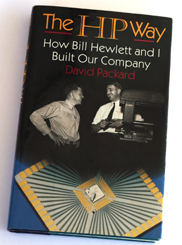
 Environmental Test Manual.
Environmental Test Manual. 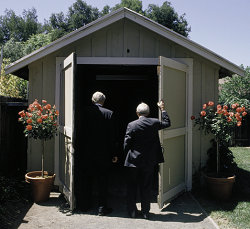 The garage, the birthplace of Silicon Valley.
The garage, the birthplace of Silicon Valley.
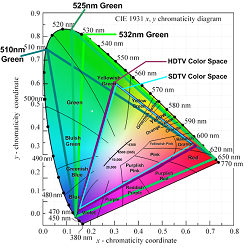
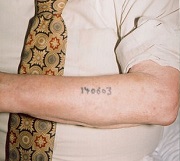 These were my only words, and he appreciated this very much. He invited me for dinner, and we had a good evening in an open air restaurant in San Jose, where he drove me in his private (wrecked up) car. Egon had a great sense of humor. There is even a story, on the "HP memories" website, where he tells how he was forced to design parts of electric installation, in the concentration camp, because he was an engineer. Because he was so good at it, this saved his life. On purpose he made the wiring too complicated, and also too large diameter, being sure to waste copper, which was hard to get in war times. What a man! He was one of the true genius in HP labs. As a recognized genius, he was free to define his own work targets. This is an unofficial status, and when visiting him, people respectfully told me he was one of those very few.
These were my only words, and he appreciated this very much. He invited me for dinner, and we had a good evening in an open air restaurant in San Jose, where he drove me in his private (wrecked up) car. Egon had a great sense of humor. There is even a story, on the "HP memories" website, where he tells how he was forced to design parts of electric installation, in the concentration camp, because he was an engineer. Because he was so good at it, this saved his life. On purpose he made the wiring too complicated, and also too large diameter, being sure to waste copper, which was hard to get in war times. What a man! He was one of the true genius in HP labs. As a recognized genius, he was free to define his own work targets. This is an unofficial status, and when visiting him, people respectfully told me he was one of those very few. 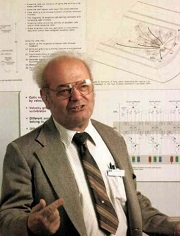
 About Dr. Roland Haitz
About Dr. Roland Haitz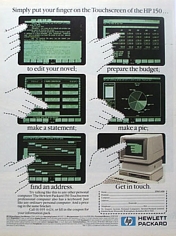
 I bench marked HP from another view. My benchmark was, a good company puts 10% of his revenue back into R&D. This is like a farmer putting 10% of his profit into fertilizing the land. That is impossible with costs of 4% per Order Dollar, as there is 6% missing. The results of this is clear: New technology can no longer be a key product, for such a company. But what will HP sell, if in the future it will not be technology anymore? Is that the main idea behind the lowest possible CPOD? Chasing lowest CPOD, was like letting the ghost out of the bottle, without knowing how to get it back in, when the ghost doesn't do as you please. It kills the technical diversity within the company, and I could already see HP end up with a narrow product line, of high order dollars at low cost. Just as they want it. Great for the moment, but then life gets dangerous. That is because technological leadership comes not at lowest cost. To be competitive with the Chinese, you must have a low cost structure, they said. Competition from new regions will come our way, and the only way to keep our position, is grow faster as the market, at lower costs. Well, and it came that way. However, you cannot grow faster than the market for ever. This is the problem that sits on your back one day. So, the day will come, when the market saturates, and 4% COPD for printers is too high then. I mean, what will you do, when your costs are as low as can be, and you get under life threatening cost pressure? Probably it catches you at the wrong moment, as these things always do. Well, when time comes, we will know. Earliest at that moment, you want the ghost back into the bottle. Only now, the ghost will say 'no' to his master. I have seen good times at HP and never any really bad times. I did see times that were just below average, and instinctively the company reacted with the full program of job cuts, salary freeze, travel constraints, asking you to pay back holidays, and early retirement programs.
I bench marked HP from another view. My benchmark was, a good company puts 10% of his revenue back into R&D. This is like a farmer putting 10% of his profit into fertilizing the land. That is impossible with costs of 4% per Order Dollar, as there is 6% missing. The results of this is clear: New technology can no longer be a key product, for such a company. But what will HP sell, if in the future it will not be technology anymore? Is that the main idea behind the lowest possible CPOD? Chasing lowest CPOD, was like letting the ghost out of the bottle, without knowing how to get it back in, when the ghost doesn't do as you please. It kills the technical diversity within the company, and I could already see HP end up with a narrow product line, of high order dollars at low cost. Just as they want it. Great for the moment, but then life gets dangerous. That is because technological leadership comes not at lowest cost. To be competitive with the Chinese, you must have a low cost structure, they said. Competition from new regions will come our way, and the only way to keep our position, is grow faster as the market, at lower costs. Well, and it came that way. However, you cannot grow faster than the market for ever. This is the problem that sits on your back one day. So, the day will come, when the market saturates, and 4% COPD for printers is too high then. I mean, what will you do, when your costs are as low as can be, and you get under life threatening cost pressure? Probably it catches you at the wrong moment, as these things always do. Well, when time comes, we will know. Earliest at that moment, you want the ghost back into the bottle. Only now, the ghost will say 'no' to his master. I have seen good times at HP and never any really bad times. I did see times that were just below average, and instinctively the company reacted with the full program of job cuts, salary freeze, travel constraints, asking you to pay back holidays, and early retirement programs.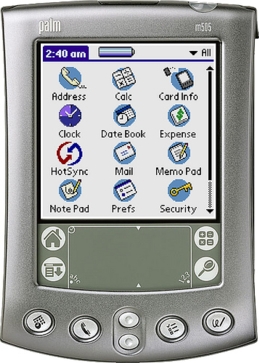 HP tries to forget this episode, so let's have a closer look why this is so. Now of course, we all know better afterwards, but this acquisition was not a very intelligent one. The Palm PC was something before the mobile phone, but it made very clever use of the existing PC network within companies. When you were in some position having to do with many other people it was "the" thing to have. It was Windows based, it would copy the data from your PC, and run the same programs. You could use it in meetings, even couple it to a beamer, or answer your email off line in the airplane. Then at your desk you put in in the docking station, and the Palm and your PC would synchronize. It was really a clever item. I was given a Palm PC myself, when I worked for HP (later Agilent) in 1999.
HP tries to forget this episode, so let's have a closer look why this is so. Now of course, we all know better afterwards, but this acquisition was not a very intelligent one. The Palm PC was something before the mobile phone, but it made very clever use of the existing PC network within companies. When you were in some position having to do with many other people it was "the" thing to have. It was Windows based, it would copy the data from your PC, and run the same programs. You could use it in meetings, even couple it to a beamer, or answer your email off line in the airplane. Then at your desk you put in in the docking station, and the Palm and your PC would synchronize. It was really a clever item. I was given a Palm PC myself, when I worked for HP (later Agilent) in 1999. 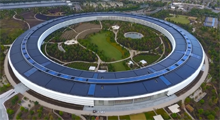 To set the .2 Billion, in perspective, look the Apple Park. This has cost 5.1 Billion to build it. So Apple pays 5.1 Billion for this building., HP pays 1.2 Billion for a piece of zombie software. Yet, HP did it. The result was a smart phone indeed, but it was completely unsuccessful. The mobile phone worked, but when it was introduced, it was already slow and too expensive. The market did not buy it. In the end they sold the phones internally for 50 Euro to their own employees , who effectively wasted their money on it. HP silently gave up on this, and released the code as open source, in a final attempt to do at least some damage to the competition. All I know for sure, they wasted 1.2 Billion on buying the PALM software alone, and in addition wasted many more millions developing this into the first and last HP smart phone, and also had to pay all those PALM Employees afterwards, to leave the company. So how many billions it has cost to develop this into a smart phone, I do not know, but given the money throwing, it can be anything. Sure is, it would have been better to give 1.2 Billion to the shareholders in form of dividend. This sure would have done more good to the stock price, as what Carly Fiorina did. These kind of crazy mistakes would have make Bill Hewlett and Dave Packard turn around in their grave, but the wise guys from marketing had already taken over.
To set the .2 Billion, in perspective, look the Apple Park. This has cost 5.1 Billion to build it. So Apple pays 5.1 Billion for this building., HP pays 1.2 Billion for a piece of zombie software. Yet, HP did it. The result was a smart phone indeed, but it was completely unsuccessful. The mobile phone worked, but when it was introduced, it was already slow and too expensive. The market did not buy it. In the end they sold the phones internally for 50 Euro to their own employees , who effectively wasted their money on it. HP silently gave up on this, and released the code as open source, in a final attempt to do at least some damage to the competition. All I know for sure, they wasted 1.2 Billion on buying the PALM software alone, and in addition wasted many more millions developing this into the first and last HP smart phone, and also had to pay all those PALM Employees afterwards, to leave the company. So how many billions it has cost to develop this into a smart phone, I do not know, but given the money throwing, it can be anything. Sure is, it would have been better to give 1.2 Billion to the shareholders in form of dividend. This sure would have done more good to the stock price, as what Carly Fiorina did. These kind of crazy mistakes would have make Bill Hewlett and Dave Packard turn around in their grave, but the wise guys from marketing had already taken over.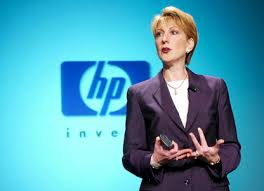 I am not proud of this, but Carly Fiorina, a USA 2016 presidential candidate, was our highest boss at Hewlett Packard. After she came, suddenly there was stress end pressure everywhere. I don't know exactly what caused it, but in some way, there was always trouble, she was always there along with it. Financial items became emotional. The women behaved more important, probably hoping for better career chances now. Some openly said so, more women would be appointed in the management. I think this is a wrong attitude. You are supposed to get positions because of what you have PROVEN to do, and not because of your big talk, sex, religion, age, or the way you look.
I am not proud of this, but Carly Fiorina, a USA 2016 presidential candidate, was our highest boss at Hewlett Packard. After she came, suddenly there was stress end pressure everywhere. I don't know exactly what caused it, but in some way, there was always trouble, she was always there along with it. Financial items became emotional. The women behaved more important, probably hoping for better career chances now. Some openly said so, more women would be appointed in the management. I think this is a wrong attitude. You are supposed to get positions because of what you have PROVEN to do, and not because of your big talk, sex, religion, age, or the way you look.